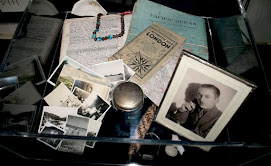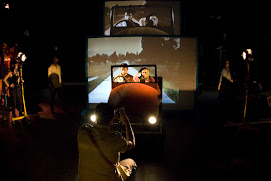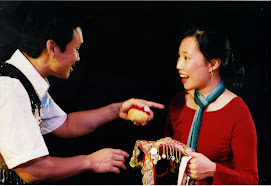Since the end of the 1990s I haven’t written much in the way of prose, so to get myself back into the groove, I wrote this piece, Wine & Cheese in the Amazon, about a trip I made a couple of years ago to the Brazilian city of Manaus—not a crap place, but certaibly a curious one …
France was at the top, then Italy, followed by Germany and Spain. Australia was at the bottom in a generic ‘New World’ category, with Chile off the list altogether because this was 1980 and Pinochet was in power. Like many people my age who grew up in England, wine was an exotic tipple associated with special occasions, continental holidays and bohemian proclivities. Although by the time I was at university, this was changing, and I could navigate the cheap shelves of the off-licence with confidence: Black Tower, Blue Nun, Bull’s Blood from Hungary, and Mateus Rosé from Portugal, which came in distinctive, bulb-shaped bottles to be recycled into lamp-stands and candle-holders.
Twenty-five-plus years later and 1,600 kilometres up the Amazon, I’m drinking Mateus Rosé again. And I’m not the only one: the ubiquitous pink is on the up again, benefiting from a recent surge in popularity of rosé wines.
‘Fondue & Wine Night’ at this particular restaurant in Manaus is a step back in time to that pre-cholesterol era when cheese was healthy and wine was sweet. It’s my last night in Manaus before I fly back to Rio de Janeiro, and I’ve come here because—well, a place advertising a ‘Fondue & Wine Night’ must have wine on offer. And with all that cheese to keep cool, I figure they’ll have that other essential: air conditioning.
Three degrees south of the Equator, Manaus is an oddity: a city of almost two million people in the heart of the Amazon. On the map it’s six boldface letters amid a swathe of green; on the ground, the humidity is crushing.
‘Because of the evaporation, Manaus is always evaporating,’ the taxi driver explained as he ferried me from the airport to my hotel.

Travel guides are not kind to Manaus, describing it as dirty and overcrowded, an oily blot on our rainforest fantasies. But I like the buzz and frontier ambience of this river port. I like the cast iron Municipal Market where biodiversity comes alive with tentacles and spiky rinds. The waterfront where porters run cases of guaraná and transformers to waiting barges. And the old district of Educandos, named after the teachers who were some of the city’s first migrants. Where one morning, I watched a businesswoman in high heels climb to her bus stop across a system of planks and makeshift bridges. And wondered why, despite housekeeping services and modern plumbing, I was sweaty and crumpled, while people living in the most basic of circumstances were immaculately turned out?
With this in mind, I’ve dressed up for the ‘Fondue & Wine Night’, applied lipstick, and taken a cab to the up-market Vieralves neighbourhood. But already my shirt looks as if I’ve slept in it.
From a few doors down, a band in full stampede. 2/4 syncopation loud enough to stagger the pulse of the neon sign across the street. Or maybe the power is about to short out, the way it did my second day here?

Around 4:00 pm branched lightening sprang from a black curve of the forest. Thick clouds, purple, grey and silver-edged, began to drop spots the size of tennis balls onto the path, and within seconds rain was pouring in sheets so opaque it was impossible to see the tree a couple of metres away—let alone the Amazon beyond. Straight down, taps turned on full capacity, the monsoon that swept in about the same time every day was especially intense that afternoon—my second in Manaus. The lamp in my room sparked, the fan stopped; there was nothing for it but to head for the lobby and a glass of chilled white wine.
That’s when I discovered the hotel bar didn’t serve wine. Only beer and spirits and a raft of soft drinks. The barman however, tried to oblige, rummaging under the counter until he found—
‘Red?’ he asked, holding up the remains of an unidentified bottle.
‘Uh—no. Thanks.’ I mean, God knows how long it’s been sitting there!
Later, in the café, I tried again.
‘Sorry, no wine. Would you like a Coke instead?’
I could, I discovered, order a bottle of wine on room service. There’s Local or Imported. Imported from where? France, Chile … Uzbekistan? I called to ask.
‘From overseas, madam.’
I opted for the local white.
Ten minutes later, a waiter arrived with a tray and two glasses. Only to hesitate, confusion crinkling his brow, reluctant to open the bottle for a single senhora.
Is this the lot of the solo traveller? Or is it a wine and gender thing? ‘[T]he assumption on the part of wine waiters that women are too frail to consume or too stingy to pay for a whole bottle,’ as Elizabeth David put it. Whatever the case, I ended up pouring most of that room service Chardonnay down the sink. Not because it was unpleasant, but because I realised with the first sip, that what I really wanted, was to enjoy the drink of my choice in a public space.
Like its cuisine, the décor at the fondue restaurant is pure 1970s. In fact much of Manaus’s appeal is retro—not reconstituted heritage, but the real 70s deal. Take concrete. Like their colleagues elsewhere, the architects of modern Manaus embraced concrete with a vengeance, and everywhere you go, there it is: smooth concrete, bumpy concrete, windowless concrete, textured, moulded, weed-sprouting concrete. Is it an aesthetic choice? Or an attempt to combat the weather, the decay that creeps up every façade and pillar, the moisture that softens everything?

Manaus is a boom and slump sort of place, and if the concrete jungle is the design legacy of the boom that began in 1966 when the government declared the city a free-trade zone, then the pink and white opera house is the most visible reminder of that earlier boom, what translator Leandro calls ‘the rubber time’.
‘Everyone,’ he announced the first time we met, ‘has a certain size to their life, and you can refuse to fill it or use it all.’
A philosophically-inclined man with indigenous bone-structure and expressive hands, Leandro talked with affection of Eduardo Gonçalves Ribeiro. State governor during the final decades of the nineteenth century, his flamboyant determination to bring ‘light into the dark forest’ was a source of inspiration for Werner Herzog’s 1982 film Fitzcarraldo. Ribeiro’s tenure coincided with the rubber boom. A period of monopoly when entrepreneurs and bosses lived in outlandish luxury. When Camembert and raspberry jam arrived on steamships from North America; when horses were given vintage Burgundy to quench their thirst, linen sent to Paris or London to be washed, and ladies donned gloves and fur coats to hear Verdi’s latest at the newly-opened Teatro Amazonas. Although, as I sat in that theatre, in my red velvet seat, listening to a string quartet rehearse, I wondered about the truth of these stories, which seem to become more baroque with each retelling.
We were outside the theatre, taking photographs, when a boy appeared at the top of the steps. He was about ten or eleven-years-old, barefoot, pushing a battered wheelbarrow full of pineapples. Another vendor attempted to shoo him away; trade in tourist hot spots is strictly controlled. The pair of them yelled insults at each other, until the vendor marched up to the barrow and kicked it over. Wheelbarrow and pineapples tumbled down the steps, but Eisenstein wasn’t there to record for posterity that image of falling fruit. Or the dignity of the boy as he picked up his livelihood.
‘He’s probably left the interior for the future,’ explained Patrícia, an architect from São Paulo, here as part of a scheme to provide in-town housing for the region’s native peoples. Housing that will acknowledge their traditions whilst accepting the fact that they are now urban dwellers.
Buy a Nokia phone in Recife or a Samsung TV in Porto Alegre, and chances are it was put together in Manaus. Drawn by the promise of tax relief, multinationals moved into the Distrito Industrial, and at night you can see their corporate logos lording it over the city. The aristocrats of this second boom are executives from Europe and South Korea, but unlike their predecessors, the majority of them will never actually set foot in Manaus. As for the workers, many of them hail from remote communities off the radar for all but the most intrepid anthropologist.

By now I’d given up looking for wine by the glass or half-carafe in favour of a bottle of anything I could imbibe in a public venue, rather than alone in my room. A quest that took me to the poolside buffet of a nearby hotel.
‘Can I see the wine list?’
The waiter handed me the standard menu: cocktails, spirits, beer and non-alcoholic options. I repeated my request, this time in Portuguese. He sighed and made for the waiters’ station. Surely I’m not the only wine-drinker in Manaus?
The list when it arrived, was short and predominantly Argentinean. ‘I’d like the Brazilian Riesling, please.’
‘Blanco ou tinto?’
I don’t think Rieslings come in red, do they?
A bottle of Marcus James was brought in an ice bucket to my table by another waiter, a stocky, older man, his face overgrown with fatigue. It turned out to be a rather bland, thin-bodied drop—No, let’s be generous and call it ‘refreshing’. Besides, after all that hunting, I was determined to enjoy it.
Wine grapes were introduced into Brazil by the Portuguese as far back as 1532, but encountered various environmental problems and failed to flourish. As did the Spanish vines planted by Jesuit missionaries along the Uruguay River a hundred-and-thirty years later. It was not until the 1880s that Brazilian viticulture got going in the southernmost state of Rio Grande do Sol, thanks to the know-how and persistence of Italian immigrants. Wine grapes are now also grown in north-eastern Brazil, and the upper São Francisco valley is probably the most important tropical vineyard in the world. This would certainly surprise the Victorian explorer Richard Burton, who visited the area in 1867 and wrote: ‘Grape growing will hardly be possible in this climate, where the hot season is also that of the rains.’ But a hundred-and-fifty years after Burton, this scrubland of stunted trees and prolonged droughts is producing millions of litres of wine. The vines depend on irrigation for survival, and on restricted fecundity for quality control. Doubts remain however, about the wisdom of the enterprise; the suitability of grapes from tropical climates to produce anything more than vinho de mesa or vinegar. What isn’t disputed, is that each hectare of cultivation provides much-needed employment in this desperately poor part of Brazil.
In contrast to the wine drought, I’ve never in my life been offered so much cheese. Or to be strictly accurate, so much gorgonzola. It’s there for breakfast, there for lunch on pizzas and pasta; it’s dug into mashed potato, stuffed into fish, even disguised as soup. Tourist agencies could use it on billboards to promote the town: Want to gorge on gorgonzola? Come to Manaus!
In a satirical essay, G. K. Chesterton observed that poets have been curiously silent on the subject of cheese. Not so the contributors to Wikipedia, where cheese is apparently one of the on-line encyclopaedia’s most reworked topics—along with Fidel Castro, deconstructivism and Israel. I recognise the controversial nature of the other entries, but why does cheese inspire such passion? Myself, I regard cheese as politically neutral, although there is that pre-gourmet association with parsimony and spinsterhood, captured so succinctly by Barbara Pym: ‘I went upstairs to my flat to eat a melancholy lunch. A dried-up scrap of cheese, a few lettuce leaves … A woman’s meal, I thought, with no suggestion of brandy afterwards.’

Today, my last in Manaus, I hired a driver and went to the Adolpho Ducke Reserve and Botanic Gardens on the eastern outskirts of town.
‘Not long ago you saw only the forest from out here,’ said Amir, as he parked the car. ‘Now look! Skyscrapers and buildings.’
I couldn’t tell if Amir regretted this change or welcomed it, but not much more than twenty kilometres from the traffic snarls and Internet cafés of Centro, the road ran out. Literally. You’re in the middle of nowhere with forest in every direction. Amir turned off the engine, and a heavy press of silence descended. Was it only a few minutes ago that we passed gardens cut out of the bush? A makeshift church? Huts selling cachaça and cans of Coca-Cola, clothes drying on wire fences?
When the military took over in 1964, national security became a government priority, and the Transamazônica Highway was designed to link the Atlantic coast with the Peruvian border. A grandiose project in the Fitzcarraldo mould, the motorway remains unfinished. Of the 2,500 kilometres so far constructed, much of it is unpaved, making it not only impassable in the rainy season, but also prone to reinvasion by the forest.
Except for the road to Boa Vista, 450 kilometres to the north, Manaus has no sealed roads linking it to any other city.
‘Do you ever feel isolated?’ I asked Amir.
He was puzzled by the question.
I explained that I once spent several months in Perth on the edge of Western Australia. Often referred to as the most geographically isolated city in the world, I was aware of its remoteness, the desert breath of the Nullarbor on the back of my neck, the whole time I was there.
Amir shook his head. Manaus is different. ‘Because of the river.’
As we were leaving the Reserve, I spotted a kid in a Star Trek T-shirt kicking a football back and forth across a dirt track pockmarked with puddles. This was indeed the final frontier, and at least by road, there was nowhere else to go—boldly or otherwise.
‘May I have the bill, please?’
The head waiter darts over. Is everything is all right?
The food was fine, the service prompt, the wine—well, there’s only so much ‘blush’ or rosé a girl can take, despite new packaging and ad campaigns aimed at encouraging us to ‘Drink Pink’. When I was a student we drank Mateus Rosé because it was cheap. Perhaps for today’s twenty-somethings, it is their way of rebelling against their parents’ tastes?
Outside the restaurant, the street crackles with anticipation, diesel fumes and barbecuing fish; crowds throng open-air bars pumping out competing rhythms, and impeccably dressed couples saunter along, seemingly impervious to the evening drizzle. I feel scruffy and unironed again, but I am starting to understand something about those rubber barons and their laundry.

When I get back to the hotel, I grab a big, golf umbrella and sit for a while on the wall behind the car park. The Amazon on that last rainy night offers no horizon, rolling unbroken into a wet, inky infinity. Sky and river in unison. Miles out, I can see the silhouettes of tiny boats as they bob among the churning water, like dragons on a medieval map.
‘Quando ele volta?’
Suddenly, behind me, a loud voice. A businessman paces up and down, shouting into his mobile. A snake slithers between two vehicles and into the garden. The man’s foot misses it by inches, but he’s too engrossed in his phone conversation to notice. Or too blasé. To be familiar with a place is, after all, to be blind to the strangeness it presents to outsiders.






+Photo+Leah+McGirr+3.jpg)



